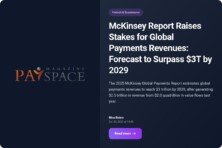The media reports that currently, the dominant point of view among experts is that shortly the Bank of England is highly likely to warn investors that they should not bet on launching the process of consistently cutting interest rates if its policymakers decide this week on a sharp lowering of the cost of borrowing.

Nowadays, a realistic scenario for the actions of the financial regulator of the United Kingdom is to cut interest rates as early as Thursday, August 1. The corresponding point of view is dominant among economists interviewed by media representatives on the prospects for easing the monetary policy of the Bank of England. It is worth noting that the potential implementation of the scenario, which experts assess as the most realistic, will mean lowering the cost of borrowing in the United Kingdom for the first time since the beginning of the coronavirus pandemic.
At the same time, investors are much less enthusiastic about the prospects for easing the Bank of England’s monetary policy this week. In their opinion, the probability that at the August meeting of the financial regulator of the United Kingdom, a decision will be made on cutting interest rates by a quarter point is 45%.
Currently, expectations are circulating in the UK that the country’s economic system will be on an upward trajectory in the current year and 2025. These sentiments form a kind of predictive space in the context of which the Bank of England will decide on monetary policy easing. The mentioned configuration of economic reality in the United Kingdom generates a fundamentally different environment compared to the conditions and circumstances of the past, within which the country’s financial regulator will or will not take action in the context of changes in interest rates. There is an opinion circulating among experts that the current condition of the UK economy does not contain risks of inflationary pressure, including in the context of potential probabilities belonging to the category of strictly theoretical scenarios.
The governor of the Bank of England, Andrew Bailey, has not made any statements about a possible change in monetary policy since May. Against this background, analysts rely mainly on their own assumptions about the furthermost likely actions of the financial regulator of the United Kingdom and indirect signals coming from officials, but which are not unambiguous evidence of certain plans. For the mentioned reason, there is currently no clear understanding of how the Monetary Policy Committee will balance concerns about wages and prices with the risk that the highest cost of borrowing in the last 16 years will be a deterrent in the context of economic growth prospects.
Nowadays, the benchmark interest rate in the United Kingdom is 5,25%.
Sonali Punhani, the UK economist at Bank of America, says there is a low probability that following the results of the August meeting, the Bank of England will give clear guidance on future interest rates or signal the beginning of a steady cycle of lowering the corresponding indicators. According to the expert, it would keep the focus on the data to determine the timing of the next move.
It is worth noting that markets and analysts agree in the context of the opinion that there will be no quick cutting of the benchmark rate in the United Kingdom. It is worth also paying attention to that the relevant point of view provides that the intensity of the mentioned process will not change towards acceleration even if a decision is made at the August meeting of the UK financial regulator to ease monetary policy.
Previous investor forecasts contained expectations that the Bank of England would two times lower the cost of borrowing by a quarter point in the current year. At the same time, the financial regulator of the United Kingdom hinted that even with the easing of monetary policy at the August meeting, interest rates would still remain in the restrictive territory.
The Monetary Policy Committee currently does not demonstrate unity of opinion in the context of the vision of the concept of actions related to changes in the cost of borrowing. There is a circulating opinion among economists about the probability of cutting the interest rate by a split of 5 to 4. Some officials, notably chief economist Huw Pill, Jonathan Haskel, and Catherine Mann say that in the context of the current configuration of economic reality, price pressure persists, which is a particularly sensitive factor in the structure of inflation in the service area and an important source of impact on the dynamic of the wage growth.
Nowadays, some central banks have already begun to ease monetary policy. For example, the relevant decision was made by the Swiss National Bank. Also, the European Central Bank began lowering the cost of borrowing, but in this case, only one action was performed with far from maximum prospects for continuing the cycle of monetary policy easing. At the same time, the Federal Reserve is showing caution in the context of its approach to cutting interest rates. Officials of the central bank of the United States believe that they need to get as much data as possible confirming the movement of the inflationary process towards the 2% target before easing monetary policy. At the same time, it is worth noting that globalization in the global economy to a certain extent forms the interrelationship of financial regulators’ decisions. This means that the actions of one central bank can adjust the strategy of several other similar institutions. In recent decades, there has been an increase in the interdependence of national economies against the background of an increase in the speed and volume of goods, services, capital, and technologies across state borders.
In the framework of deciding whether to make changes to the monetary policy strategy, the Bank of England will pay attention to the dynamic of inflation. The United Kingdom’s financial regulator is taking a cautious approach in the context of potential interest rate cutting. To a certain extent, the corresponding position is similar to the assessment of the situation typical for the European Central Bank, which left the deposit rate unchanged in the current month after the start of monetary policy easing in June. Traders expect that the next lowering of the cost of borrowing in the eurozone will occur in September. At the same time, the implementation of this assumption is not guaranteed, although it belongs to the category of a realistic vision of potential future actions of the European Central Bank.
It is difficult for economists and markets to predict the results of the August meeting of the Bank of England. The financial regulator of the United Kingdom, in the context of potential monetary policy easing, faces the risk that cutting interest rates could trigger a reverse movement of the pound sterling rally observed in recent months.
The silence from the representatives of the Monetary Policy Committee has significantly weakened expectations regarding the lowering of the cost of borrowing. It is worth noting that in this case, the lack of statements and comments was due to the election campaign on the eve of the parliamentary elections that were held in the current month.
Economists Dan Hanson and Ana Andrade say that the Bank of England’s August policy decision is on a knife edge. In their opinion, cutting interest rates is more likely than maintaining the current indicator. At the same time, they noted that it is difficult to be sure of the potential results of the August meeting of the financial regulator of the United Kingdom.
It is believed that Andrew Bailey is part of a group of Bank of England officials who were close to cutting interest rates in June. At the same time, he has not made any public statements since the elections were called in May.
Some economists focused on the minutes of the June meeting of the Bank of England. These minutes contain statements that the decision of the financial regulator of the United Kingdom not to lower the cost of borrowing was finely balanced from the point of view of some members of the Monetary Policy Committee. The mentioned documentation also downplayed the significance of sharp overshoots in inflation in the service area, which was caused by volatile goods in the basket.
Stefan Koopman, senior macro strategist at Rabobank, says that the financial regulator of the United Kingdom has left markets in the dark. According to the expert, after a false start of interest rate hikes in 2021, policymakers could provide a little more guidance before possibly lowering borrowing costs. Stefan Koopman also stated that Andrew Bailey and potential swing voters are leaving the August meeting wide open.
The data on the condition of the economic system of the United Kingdom, which is not unambiguous, and the absence of any statements from the Bank of England generate uncertainty in the context of money-market pricing for the meeting. Last week, traders were pricing in around 11 basis points of monetary easing. There is no unanimous opinion on the market about the likelihood of lowering the cost of borrowing in August.
The rapid rally of the pound remains in the territory, which is under the control of officials of the Bank of England. Likely, the exchange rate of the national currency of the United Kingdom will show a decrease if the country’s financial regulator decides to cut interest rates.
It is worth noting that the pound sterling is the best-performing major currency in the world in the current year. This tendency is largely based on expectations that the Bank of England will keep borrowing costs at a high level, even if financial regulators in other countries intensively ease monetary policy.
Michael Brown, a strategist at Pepperstone, says that the August meeting of the central bank of the United Kingdom is likely to be an important event, because of which traders must manage risks. According to the expert, the potential decision of the Bank of England is one of the most difficult to forecast in recent times. Michael Brown says that in this case, much will depend on the vote split and policy guidance. The expert also said that an extremely important question is whether the financial regulator of the United Kingdom will mention further lowering the cost of borrowing following the results of the August meeting.









